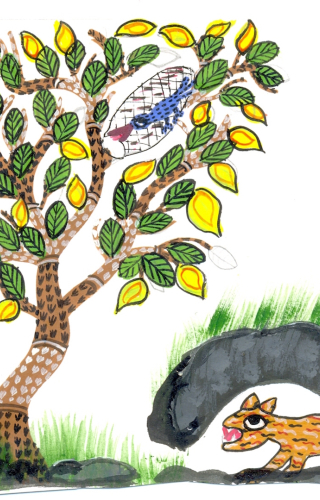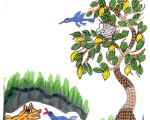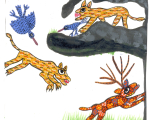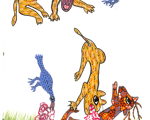Gond painting as a distinctive genre of folk painting came into existence after the eminent painter J. Swaminathan conducted a visual training workshop with the Gond tribal youngsters by giving them brush, paint, and paper to visualise their world. Surprisingly all the participants of the workshop painted in a visual language that had coherence, similarity and unity. The husband and wife duo, Ramesh and Radha Tekam, belong to the finest of the Gond artists, painting, innovating and refining their artistic inheritance. The folktale 'The Lion and the Crow', painted by Ramesh and Radha Tekam, narrates the unusual friendship between a lion and crow set in the forests of Madhya Pradesh. The Tekams follow the Gond style of filling the exteriors of their subjects with bright-coloured decorative dots and presenting them all on one plane without providing any visual depth. The disproportionately small picture of the lion adds childlike delight to their storytelling while the colourful tree looms large occupying most of the space in the painting. Like in the most Gond paintings, the Tekams do not hesitate to draw the characters twice within a single frame to capture two different moments of continuous action. For instance, in picture 4 we see the crow sitting with the lion in the den and it leading the lion to the deer, drawn twice to represent two actions. The double drawing of characters in the story continues in the frames 5 and 6 too. The beauty of Gond paintings thrives on such liberties taken with narrating a story visually where conventions of realistic paintings are not followed. The richness of colours adds to their splendours.

















